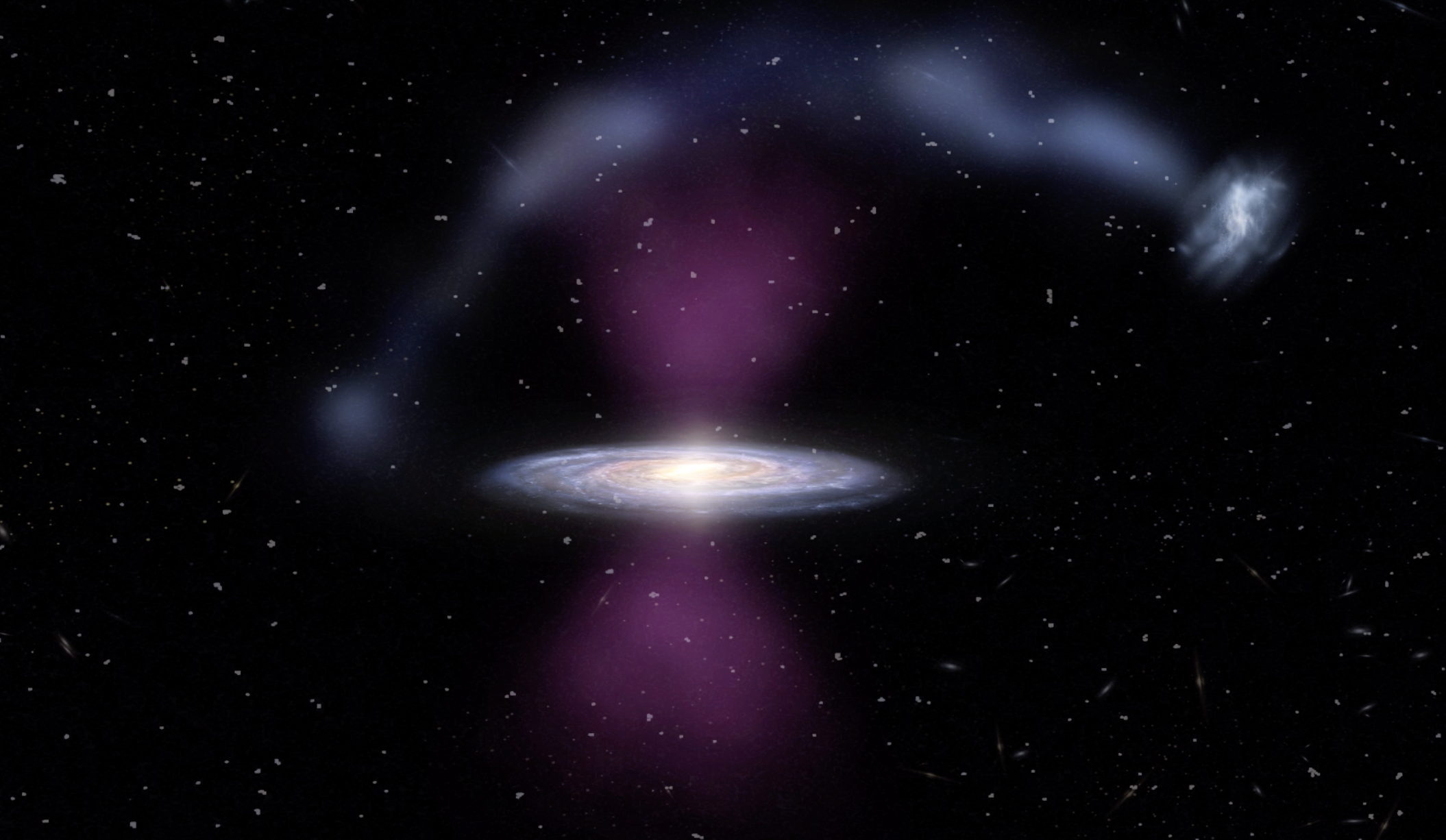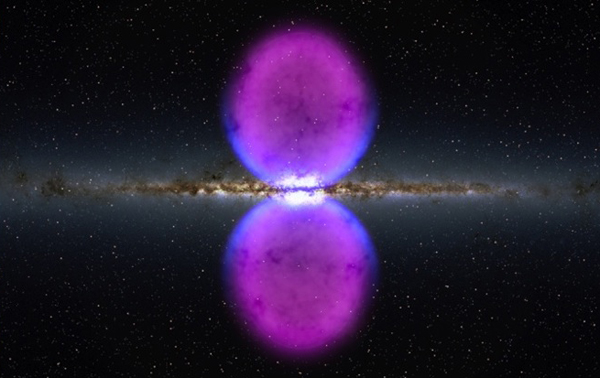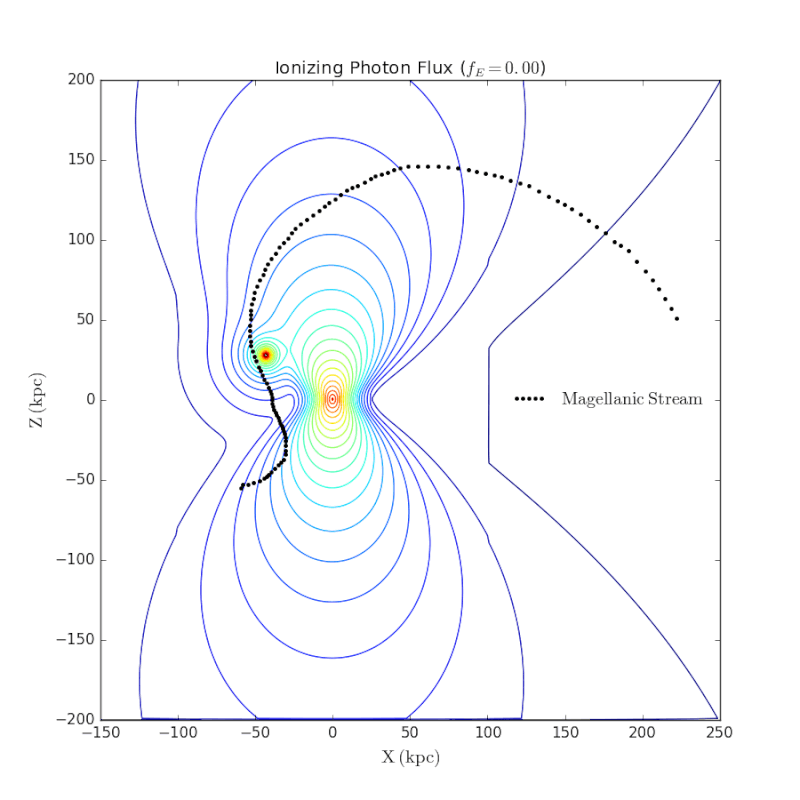
Remember the vast and mysterious Fermi bubbles, apparent remnants of a titanic explosion close to the supermassive black hole in the center of our Milky Way galaxy? They were widely discussed around the year 2010, noticeable in X-ray and gamma ray data from the ROSAT and Fermi satellites. Astronomers said today (October 6, 2019) that they’ve uncovered more evidence relating the Fermi bubbles – gathered using Hubble Space Telescope data – in the form of two enormous bursts of ionizing radiation that must have zipped through the poles of our galaxy and out into deep space. One burst must have been powerful enough to reach 200,000 light-years into space, so that its impact struck the Magellanic Stream, a long trail of gas extending from the nearby Large and Small Magellanic Clouds, dwarf galaxies orbiting our Milky Way.
All of this activity from our Milky Way’s center – the explosion and its aftermath – apparently occurred just 3.5 million years ago when, on Earth, the asteroid that triggered the extinction of the dinosaurs was already 63 million years in the past, and humanity’s ancient ancestors, the australopithecines, were roaming in Africa.
They estimate that the blast lasted for perhaps 300,000 years, a long time in human terms, but an exceedingly short time as measured on the scale of galaxies.

The astronomers who recently discovered the flare event – impacting the Magellanic Stream – said they noticed it because:
… some Stream clouds towards both galactic poles are highly ionized by a source capable of producing ionization energies up to at least 50 eV [electronvolts].
And these researchers associate this ionization with the blast that created the Fermi bubbles.
These new findings come from a team of scientists led by astronomer Joss Bland-Hawthorn from Australia’s ARC Centre of Excellence for All Sky Astrophysics in 3 Dimensions (ASTRO 3D). They are soon to be published in the peer-reviewed Astrophysical Journal.
About 10% of all galaxies are known to have flares of this kind, which are called Seyfert flares. Our galaxy isn’t generally considered a Seyfert galaxy, or a particularly active galaxy at all. But the Milky Way is known to have a 4-million-solar-mass black hole at its heart, called Sagittarius A*, or Sgr A* (pronounced Sagittarius A-star). Even earlier this year, Sgr A* was caught having an unusually large meal of gas and dust.
So astronomers are learning that the Milky Way, too, can sometimes have a burst of activity, although it’s minor in contrast to true active galaxies.
The explosion 3.5 million years ago was too huge to have been triggered by anything other than nuclear activity associated with Sgr A*, said the team who studied it. Bland-Hawthorn commented:
The flare must have been a bit like a lighthouse beam. Imagine darkness, and then someone switches on a lighthouse beacon for a brief period of time.
Lisa Kewley, director of ASTRO 3D, said:
This is a dramatic event that happened a few million years ago in the Milky Way’s history. A massive blast of energy and radiation came right out of the galactic center and into the surrounding material. This shows that the center of the Milky Way is a much more dynamic place than we had previously thought. It is lucky we’re not residing there!

Bottom line: Researchers have found evidence of a cataclysmic flare that punched outward in both directions from our galaxy’s center, reaching so far into intergalactic space that its impact was felt 200,000 light-years away. They associate this new discovery with the Fermi bubbles, apparent remnants of a titanic explosion close to the supermassive black hole in the center of our Milky Way galaxy, some 3.5 million years ago.











